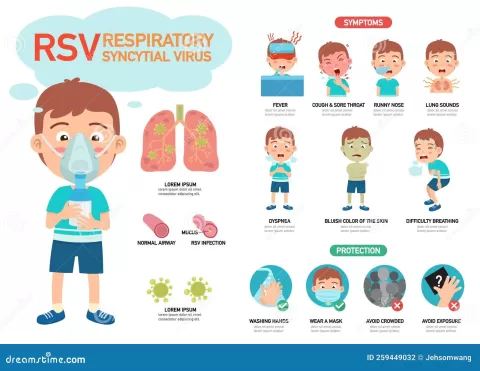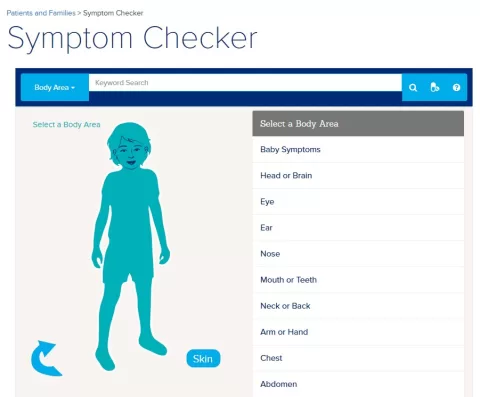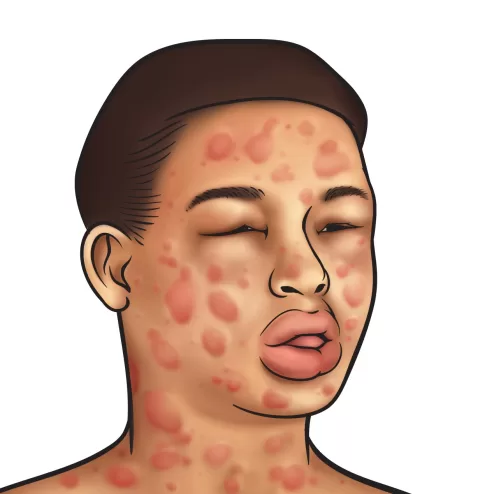Aspergillosis is a serious fungal infection caused by the **Aspergillus** fungus, which is commonly found in soil, decaying vegetation, and even in homes as mold. This disease primarily affects individuals with compromised immune systems, making them particularly vulnerable to its various forms. Understanding the symptoms of aspergillosis is crucial, as early diagnosis can significantly improve treatment outcomes. Common signs include persistent coughing, wheezing, fever, and in severe cases, shortness of breath. This article will delve into the diagnosis of aspergillosis, treatment for aspergillosis, and even how this infection can affect our beloved pets, highlighting the importance of awareness and timely intervention.
Known for its association with the **Aspergillus** mold, aspergillosis represents a spectrum of diseases that can manifest in different ways depending on the individual’s health status. This fungal infection can lead to respiratory complications, especially in those with weakened immune systems or lung diseases. Symptoms can range from mild allergic reactions to severe invasive infections, making the diagnosis of aspergillosis a critical focus for healthcare providers. The treatment for aspergillosis often includes antifungal medications and may vary based on the severity and form of the infection. Moreover, pet owners should be aware that aspergillosis can also affect animals, highlighting the need for vigilance in both human and veterinary health.
What You Should Know About Aspergillosis Symptoms
Aspergillosis can present with a range of symptoms that vary significantly depending on the individual and the form of the disease. Common symptoms include persistent coughing, wheezing, and shortness of breath, which may be mistaken for other respiratory conditions like asthma or bronchitis. Individuals with weakened immune systems may experience more severe manifestations, including chest pain and fever, which can signal an invasive infection. Recognizing these symptoms early is crucial, especially for those at higher risk, such as organ transplant recipients or individuals undergoing chemotherapy.
In addition to respiratory symptoms, aspergillosis can lead to systemic complications, particularly in invasive forms of the disease. Patients may experience hemoptysis, which is coughing up blood, and other signs of widespread infection. Allergic bronchopulmonary aspergillosis (ABPA), a specific type of aspergillosis, presents with symptoms such as bronchospasm and increased mucus production. Understanding these diverse symptoms can aid both patients and healthcare providers in identifying the condition promptly and initiating appropriate treatment.
Effective Diagnosis of Aspergillosis
Diagnosing aspergillosis involves a multifaceted approach that includes clinical evaluation, laboratory tests, and imaging studies. Common diagnostic tests include blood tests that detect specific antibodies against the Aspergillus fungus, as well as cultures from sputum or tissue samples to confirm the presence of the pathogen. Imaging studies like CT scans or X-rays may reveal characteristic lung lesions indicative of aspergillosis, assisting healthcare providers in differentiating it from other pulmonary diseases.
The complexity of diagnosing aspergillosis is heightened by the overlap of its symptoms with other respiratory conditions. Therefore, a thorough patient history and symptom evaluation are essential. In some cases, a biopsy may be needed to obtain a definitive diagnosis, especially in invasive aspergillosis. By employing a combination of diagnostic methods, healthcare professionals can accurately identify aspergillosis and tailor effective treatment strategies for affected individuals.
Treatment Options for Aspergillosis
Treatment for aspergillosis varies widely depending on the severity and form of the disease. For individuals experiencing mild allergic reactions, corticosteroids and antifungal medications are often effective in alleviating symptoms and controlling the fungal growth. Medications such as itraconazole or voriconazole are commonly prescribed to target the Aspergillus fungus in patients with allergic bronchopulmonary aspergillosis or mild infections.
In cases of invasive aspergillosis, which poses a significant health risk, more aggressive treatment is necessary. This may include higher doses of antifungal medications, such as amphotericin B, and in some instances, surgical intervention to remove infected tissue. The choice of treatment is guided by the patient’s overall health, immune status, and the specific characteristics of the infection, emphasizing the importance of personalized medical care in managing aspergillosis.
Aspergillosis in Pets: Symptoms and Risks
Aspergillosis is not only a concern for humans but also poses significant risks to pets, particularly dogs and cats. In these animals, the disease often manifests as severe nasal infections, leading to symptoms such as nasal discharge, loss of appetite, and lethargy. It is crucial for pet owners to be vigilant about these signs, as early detection and veterinary intervention can prevent complications and promote recovery.
For birds, aspergillosis can cause serious respiratory distress, characterized by lethargy and difficulty breathing. The diagnosis and treatment of aspergillosis in pets typically involve antifungal medications and supportive care. Understanding the symptoms and risks associated with aspergillosis in pets is essential for pet owners to ensure their animals receive timely and effective treatment.
The Link Between Smoking and Aspergillosis Risk
Cigarette smoking has been identified as a significant risk factor for developing various lung conditions, including aspergillosis. The harmful substances in cigarette smoke can compromise lung function and weaken the immune system, making smokers more susceptible to infections caused by the Aspergillus fungus. This increased vulnerability highlights the importance of smoking cessation as a preventative measure against not only aspergillosis but also other respiratory diseases.
Moreover, individuals who smoke may experience exacerbated symptoms of existing lung conditions, increasing the likelihood of developing severe forms of aspergillosis. Therefore, quitting smoking can lead to improved overall respiratory health and a reduced risk of infections. Public health initiatives aimed at promoting smoking cessation are vital in decreasing the prevalence of aspergillosis and enhancing lung health in the population.
Frequently Asked Questions
What are the common symptoms of Aspergillosis?
Aspergillosis symptoms can vary widely depending on the form of the disease. Common symptoms include persistent coughing, wheezing, shortness of breath, fever, and chest pain. In more severe cases, such as invasive aspergillosis, patients may experience hemoptysis (coughing blood) and systemic symptoms, necessitating prompt medical attention.
How is the diagnosis of Aspergillosis performed?
The diagnosis of aspergillosis typically involves a combination of laboratory tests, imaging studies like CT scans, and sometimes biopsies. Blood tests can check for specific antibodies, while cultures from sputum samples can confirm the presence of the Aspergillus fungus. Accurate diagnosis is crucial for effective treatment.
What treatments are available for Aspergillosis?
Treatment for aspergillosis depends on the severity of the disease. Allergic reactions may be managed with corticosteroids and antifungal medications. In cases of invasive aspergillosis, stronger antifungals such as voriconazole or amphotericin B may be necessary, and surgical intervention might be required to remove infected tissue.
Can Aspergillosis affect pets, and what symptoms should I look for?
Yes, Aspergillosis can affect pets, particularly dogs and cats. Symptoms in infected pets include nasal discharge, loss of appetite, and lethargy. If you suspect your pet has aspergillosis, prompt veterinary care is essential, often involving antifungal treatments and supportive care.
What environmental factors increase the risk of Aspergillosis?
Environmental factors such as mold exposure significantly increase the risk of developing aspergillosis. Activities like drying clothes indoors or living in damp areas can elevate mold levels. Maintaining good ventilation and cleanliness in your home can help reduce the risk of aspergillosis caused by Aspergillus fungus.
| Key Point | Details |
|---|---|
| Definition of Aspergillosis | Aspergillosis is an infectious disease caused by the Aspergillus fungus, affecting primarily those with weakened immune systems or lung conditions. |
| Symptoms | Symptoms range from cough, wheezing, and shortness of breath to fever, chest pain, and complications due to organ spread. |
| Diagnosis | Diagnosis involves lab tests, imaging studies, and sometimes biopsies to confirm fungal presence. |
| Treatment | Treatment varies from corticosteroids and antifungals for allergic cases to stronger antifungals and possible surgery for invasive forms. |
| Impact on Pets | Aspergillosis can affect pets like dogs and cats, causing severe nasal infections and respiratory distress. |
| Environmental Risks | Activities that increase mold exposure, such as drying clothes indoors, pose additional risks for developing aspergillosis. |
Summary
Aspergillosis is a serious infectious disease that primarily affects individuals with compromised immune systems or existing lung issues. Understanding the symptoms, diagnosis, and treatment options for aspergillosis is essential for managing this condition effectively. Early recognition of symptoms like persistent cough or shortness of breath, followed by prompt medical intervention, can lead to better health outcomes. Additionally, awareness of environmental risks and preventive measures can play a crucial role in reducing the incidence of aspergillosis in both humans and pets.
The content provided on this blog (e.g., symptom descriptions, health tips, or general advice) is for informational purposes only and is not a substitute for professional medical advice, diagnosis, or treatment. Always seek the guidance of your physician or other qualified healthcare provider with any questions you may have regarding a medical condition. Never disregard professional medical advice or delay seeking it because of something you have read on this website. If you believe you may have a medical emergency, call your doctor or emergency services immediately. Reliance on any information provided by this blog is solely at your own risk.








